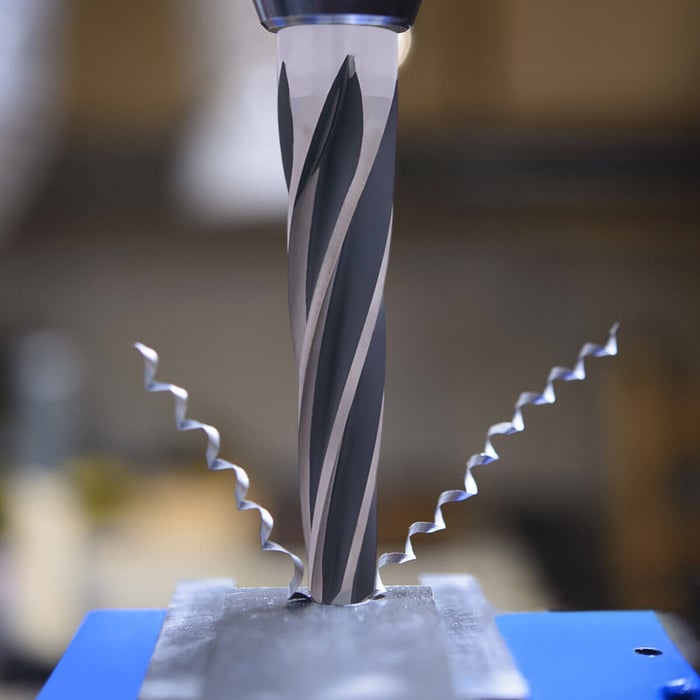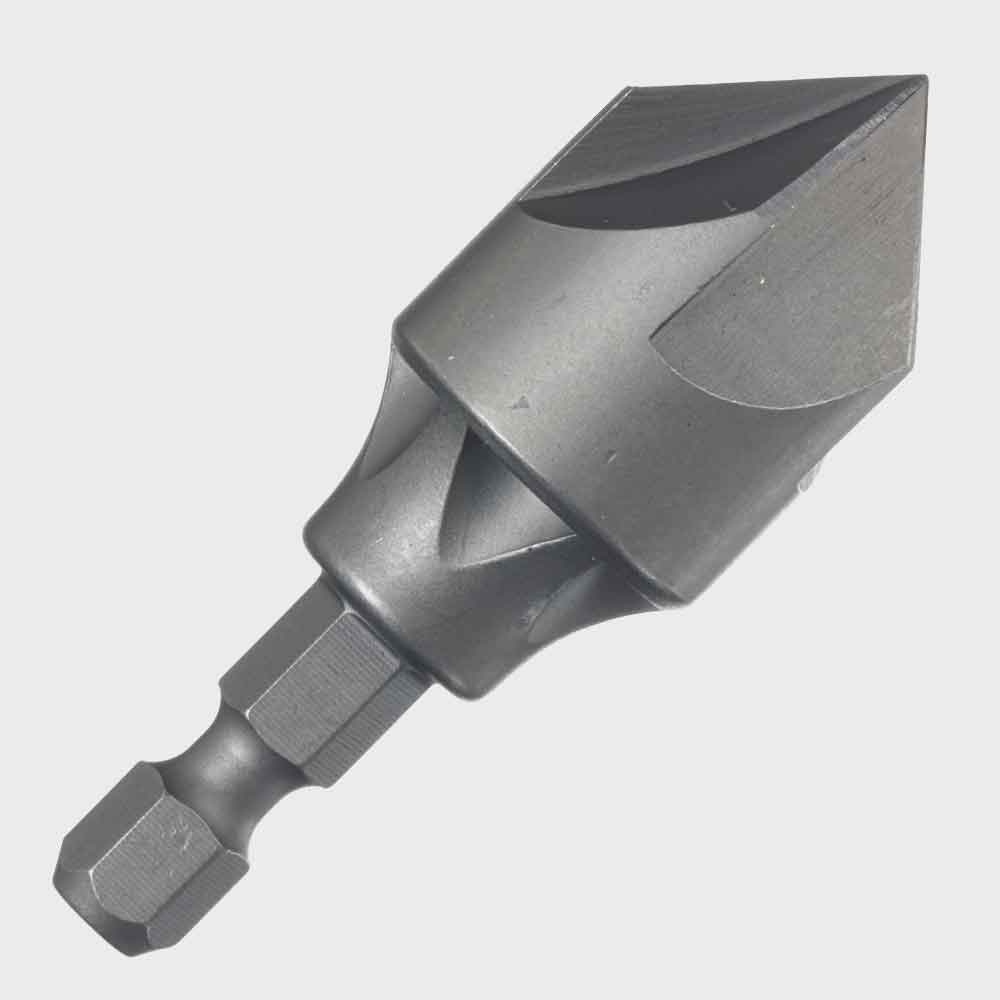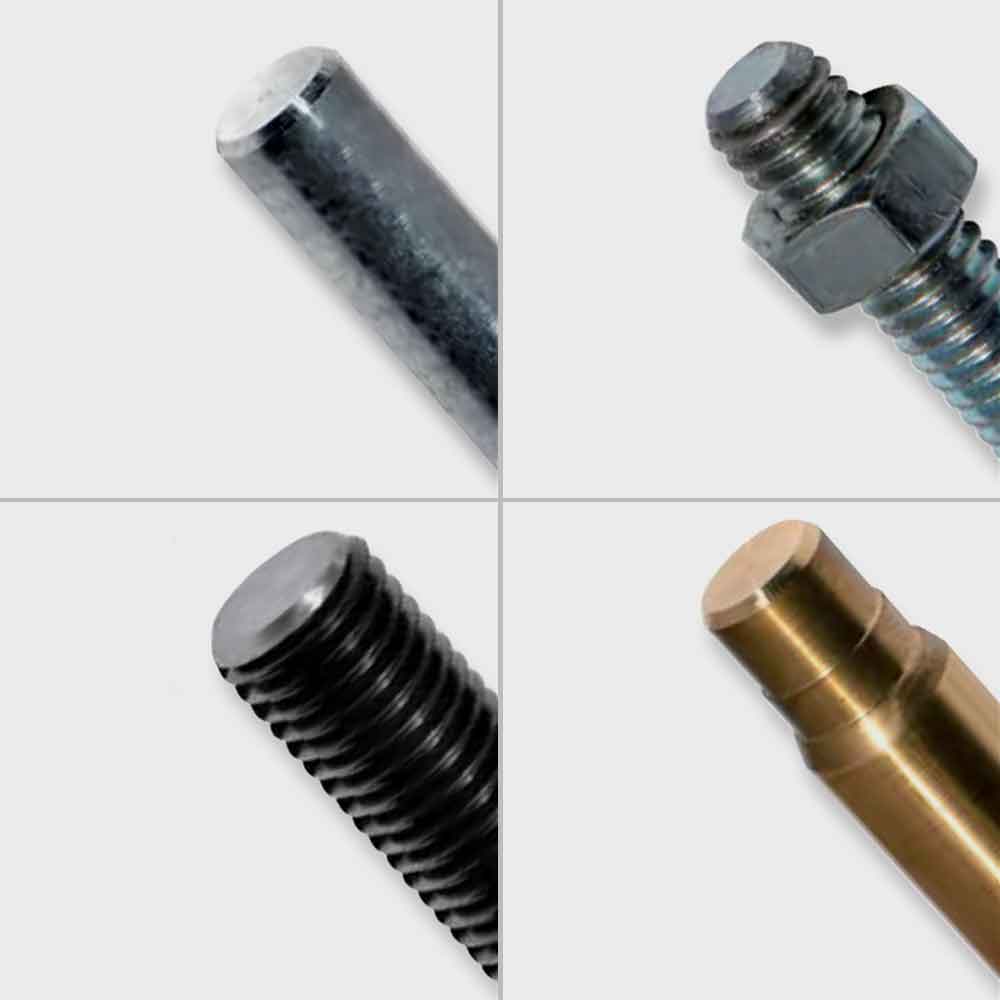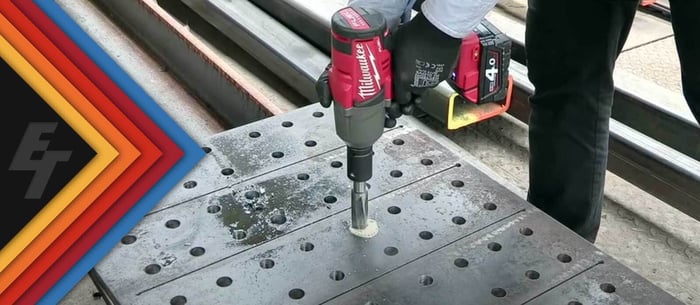Reamers are versatile tools ensure accurate sizing, smooth finishes, and proper alignment for a variety of applications. In this educational sales-centric article, we will explore the different types, including Adjustable Hand, Bridge/Construction, Automotive, Chucking, Expansion, Hand Held, Shell, Taper Pin, and Taper Pipe Reamers. We will also introduce our designs, highlighting their features such as Black Oxide or Black & Gold finish, M2 HSS construction, fast and standard spiral configurations, tapered points, left-hand spiral, right-hand cut, and 3-Flat or Hex Nut shanks. Lastly, we will share some general considerations and conclude by highlighting our fast delivery options.
 Reamer in Action
Reamer in Action
 Reamer in Action
Reamer in ActionClick here it see our selection of Bridge Reamers.
What is a reamer and how is it used?
Well, it's a cutting tool used to enlarge, shape, and finish pre-drilled or pre-machined holes. It removes a small amount of material to achieve precise dimensions, smooth surfaces, and improved hole alignment. They can be used in various industries such as automotive, aerospace, construction, and manufacturing.
The Different Types:
- Adjustable Hand - a versatile tools designed for precise hole enlargement in various applications. Featuring blades that can be expanded or contracted, they offer flexibility in accommodating different hole sizes. To use an adjustable hand reamer, first, ensure the blades are contracted to their smallest size. Insert the tool into the hole and gradually rotate it clockwise, applying even pressure. As it rotates, use the adjustable screw to incrementally expand the blades until the desired hole size is achieved. It's crucial to maintain a steady rotational speed and periodically withdraw the tool to clear chips. The adjustable nature of these reamers allows for precise control and adaptability, making them ideal for applications where multiple hole sizes or custom dimensions are required.
- Bridge/Construction - specialized tools used to align existing holes prior to bolt or rivet installation, particularly in construction and structural applications. These tools are designed with a tapered shape and sturdy construction to ensure precise hole centering for secure connections. To use a bridge/construction reamer, start by selecting the appropriate size based on the existing hole diameter. Insert the tool into the hole and rotate it clockwise with moderate pressure. The tapered design of the tool helps guide it through the hole while gradually enlarging and aligning it. Continuously monitor the progress and adjust the speed and pressure as needed to maintain control and prevent excessive material removal. Once the desired hole alignment is achieved, clean the hole and proceed with bolt or rivet installation. Bridge/Construction Reamers are essential tools for ensuring accurate and reliable connections in structural applications. Click here it see our selection of Bridge Reamers.
- Automotive - specialized tools used for precise hole enlargement in automotive applications. The purpose of these tools is to achieve accurate dimensions and smooth finishes in holes for various automotive components. These tools are typically operated by hand and are designed with a straight fluted body and a tapered point. Automotive reamers are commonly used for tasks such as enlarging and aligning holes in engine blocks, connecting rods, and other automotive parts. They are also utilized for reaming holes in brake systems, suspension components, and other critical areas. Car reamers ensure a proper fit between mating components, improve overall performance, and enhance the longevity of automotive systems. Click here to see our selection of Car Reamers.
- Chucking - essential tools used for precision hole enlargement in machine tools and drill presses. They are designed with straight or spiral flutes and a solid shank, allowing them to be securely held in the chuck of a machine. Chucking reamers are commonly used when high accuracy and a smooth finish are required. They can be used for enlarging pre-existing holes or creating holes with tight tolerances. When using a chucking reamer, it is important to ensure that the machine spindle and chuck are clean and properly aligned. Securely mount the tool in the chuck, making sure it is centered and tightened securely. Apply cutting oil or lubricant to the cutting edges of the tool to reduce friction and promote smooth cutting. Maintain a consistent rotational speed, avoiding excessive force or rapid movements. It is crucial to monitor the cutting process closely and periodically withdraw the tool to clear chips and prevent chip buildup. Chucking reamers offer precise control and accuracy in hole enlargement, making them ideal for machining operations where precise dimensions and smooth finishes are required.
- Expansion - specialized tools used for incremental hole enlargement in a controlled and precise manner. These tools feature a set of blades or segments that can be expanded to increase the diameter of the hole. Expansion reamers are commonly used in applications where gradual size adjustment is required, such as in machining operations or fitting parts with tight tolerances. One important tip when using expansion reamers is to avoid excessive force or rapid expansion, as it may cause the blades to become misaligned or the tool to get stuck. It's crucial to maintain a steady rotational speed and periodically withdraw the tool to clear chips. Lubrication with cutting oil can help reduce friction and improve the cutting process. As you expand the blades, ensure that they remain evenly spaced for uniform hole enlargement. Expansion reamers offer precise control over hole size, making them invaluable tools for achieving accurate and incremental hole enlargement.
- Hand - also known as straight-fluted reamers, are versatile tools used for precise hole enlargement and alignment in manual applications. They are typically operated by hand, offering the user control and flexibility. Hand reamers feature a straight-fluted design with cutting edges along the length of the tool. They are commonly used when working with softer materials or when a more delicate touch is required. The purpose of this tool is to achieve accurate dimensions, smooth finishes, and proper alignment of holes. While using, it's crucial to secure the workpiece in a stable position. Insert the tool into the hole and rotate it clockwise while applying moderate and consistent pressure. The cutting edges of the tool gradually remove material, enlarging the hole to the desired size. It is important to maintain a steady rotational speed and periodically withdraw the reamer to clear chips. Lubrication with cutting oil can facilitate the cutting process and prolong the life of the tool. Pay close attention to the progress, ensuring the desired dimensions are achieved. Hand reamers offer versatility and control, making them indispensable tools for achieving precise and accurate hole enlargement in various manual applications.
- Shell/Adjustable - specialized tools used for enlarging and shaping existing holes with precision. The purpose of shell reamers is to achieve accurate dimensions, smooth finishes, and proper alignment in various applications. They feature a hollow body with adjustable blades or cutting edges, allowing for customization of the hole size. They are commonly used in metalworking and machining operations, where a high level of accuracy and control is required. These tools are ideal for applications where pre-drilled holes need to be enlarged to specific dimensions or where irregularly shaped holes need to be corrected. By adjusting the blades, they can remove material gradually, ensuring a precise fit and excellent surface finish.
- Taper Pin - These tools have a tapered cutting end that matches the taper of the pin. The purpose of taper pin reamers is to ensure a proper alignment and secure connection between the pin and the hole. They are commonly used in applications where a tight and accurate fit is required, such as in machinery, automotive, or construction. Taper pin reamers allow for controlled material removal, gradually enlarging the tapered hole to the desired size. This ensures that the taper pin can be inserted smoothly and securely, providing a strong and reliable connection.
- Taper Pipe - The purpose of this tool is to ensure proper alignment and fit between pipe fittings. They are commonly used in plumbing, pipefitting, and other industries where threaded connections are essential. Taper pipe reamers help remove burrs, irregularities, and excess material from the tapered pipe threads, ensuring a smooth and accurate fit between pipes and fittings. They help create proper sealing surfaces and prevent leaks in threaded pipe connections. They are available in various sizes to accommodate different pipe thread specifications, allowing for precise and reliable pipe installations.
 Rim Champs, or Inner Rim Reamers are a unique design. They feature a 90º angle making them perfect for expanding inner pipe rims. Crafted with a 1/4" Hex Impact Shank, and forged from top-quality M2 high-speed steel (HSS), they're built to last and deliver exceptional performance and ensuring a perfect fit. Click here to see our selection of Rim Champs.
Rim Champs, or Inner Rim Reamers are a unique design. They feature a 90º angle making them perfect for expanding inner pipe rims. Crafted with a 1/4" Hex Impact Shank, and forged from top-quality M2 high-speed steel (HSS), they're built to last and deliver exceptional performance and ensuring a perfect fit. Click here to see our selection of Rim Champs.
 Bar Champs, or Outer Rim Reamers are the opposite of the aforementioned Rim Champs. This item is designed to reduce the outer rim of not only pipes but bolts and pretty much anything else you can throw at it. The range of options covers 1/8" up to 2-1/8”. Crafted with a 1/4" Hex Impact Shank, they're designed to work with any rotary drill hammer drill in rotation mode. You can choose between two types of cutting blades, M2 high-speed steel (HSS) or Carbide. These things are built to last and deliver exceptional performance and ensure a perfect fit. Click here to see our Bar Champs.
Bar Champs, or Outer Rim Reamers are the opposite of the aforementioned Rim Champs. This item is designed to reduce the outer rim of not only pipes but bolts and pretty much anything else you can throw at it. The range of options covers 1/8" up to 2-1/8”. Crafted with a 1/4" Hex Impact Shank, they're designed to work with any rotary drill hammer drill in rotation mode. You can choose between two types of cutting blades, M2 high-speed steel (HSS) or Carbide. These things are built to last and deliver exceptional performance and ensure a perfect fit. Click here to see our Bar Champs.
Our Designs:
Our reamers are available in Black Oxide or Black & Gold finish, offering corrosion resistance and a sleek appearance. They are constructed from high-quality M2 HSS material, ensuring durability and longevity. With fast and standard spiral configurations, these tools provide efficient chip removal and precise cutting. They feature tapered points, left-hand spiral design, right-hand cut, and come with 3-Flat or Hex Nut shanks, providing a secure fit and enhanced performance.
General Things to Know or Take into Consideration:
When choosing a your cutting tools, consider factors such as material compatibility, desired hole size, required tolerance, and specific application requirements. It is crucial to use the appropriate cutting speeds, lubrication, and feed rates to ensure optimal results and extend tool life.
Conclusion:
Reamers are indispensable tools for achieving precise hole enlargement, alignment, and finishing. Understanding the different types available, their unique applications, and considering factors like material, tolerance, and specific requirements allows you to select the ideal tool for your needs. Contact us with any questions, and take advantage of our fast delivery options. Delivery on most items is just a couple of days. Thanks for reading and comment below to share your thoughts!





